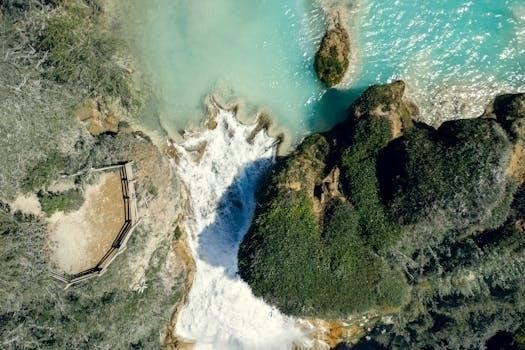Navigating the Boundary Waters Canoe Area Wilderness (BWCAW) requires reliable maps․ These maps, often available in PDF format, are crucial for trip planning․ They help canoeists explore vast, interconnected waterways and pristine forests․ These digital tools provide essential details for safe and enjoyable expeditions in the BWCAW․
Overview of the Boundary Waters Canoe Area Wilderness (BWCAW)
The Boundary Waters Canoe Area Wilderness (BWCAW), a vast expanse of over one million acres, is a unique region of pristine forests, glacial lakes, and meandering streams located in northeastern Minnesota․ This area, part of the Superior National Forest, offers a remarkable wilderness experience for outdoor enthusiasts․ The BWCAW is characterized by its interconnected waterways, making it a haven for canoeists and kayakers․ Navigating this wilderness requires careful planning and the use of detailed maps, often in PDF format, to ensure safe and enjoyable journeys․ These maps assist in identifying entry points, portage trails, and campsites․ The BWCAW’s natural beauty and abundant wildlife make it a sought-after destination for those seeking solace in nature․ The area shares a border with Canada’s Quetico Provincial Park, forming a large international wilderness area․ This makes it essential for visitors to use accurate and updated boundary waters map pdf to navigate and avoid any issues․
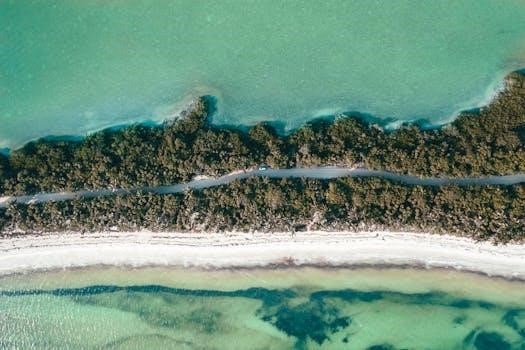
Types of Boundary Waters Maps
Boundary Waters maps come in various formats, including digital and waterproof printed versions․ Digital maps offer interactive features, while printed maps are durable and reliable for on-the-water navigation, both crucial for exploring the BWCAW․
Digital Maps for the BWCAW
Digital maps for the Boundary Waters Canoe Area Wilderness (BWCAW) offer a modern approach to navigation, often available in convenient PDF formats․ These maps provide zoomable views of the entire BWCAW, covering all 27 McKenzie map sections used by canoeists, outfitters, and guides for decades․ Interactive features allow users to scroll and explore the region’s vast interconnected waterways․ Digital maps often include enhanced details such as entry points, campsites, and portage trails, aiding in effective route planning․ With the ability to view on smartphones or tablets, digital maps are easily accessible during your canoe trip, but consider battery life and weather․ These maps are a valuable tool for those looking to explore the BWCAW while leveraging technology for more precise and flexible planning․ Users can plan their routes, and quickly locate specific areas of interest, before embarking on their adventure․ They also provide the possibility of sharing planned routes and marking points of interest․
Waterproof Printed Maps
Waterproof printed maps are a traditional and reliable choice for navigating the Boundary Waters Canoe Area Wilderness (BWCAW)․ These maps are designed to withstand the harsh conditions of the wilderness, making them ideal for canoe trips․ Several companies offer high-quality, rugged, waterproof maps that cover the entire BWCAW․ These maps typically include all the portage trails, campsites, and entry points, essential for route planning and navigation․ Unlike digital maps, waterproof printed maps don’t rely on batteries or electronic devices, making them a dependable backup․ They offer a tactile experience, allowing users to mark routes and make notes directly on the map․ Many paddlers prefer the classic feel of a physical map, appreciating the ease of viewing the entire area at once․ Waterproof printed maps are a crucial piece of equipment for any BWCAW trip, ensuring that you always have a reliable navigation tool․
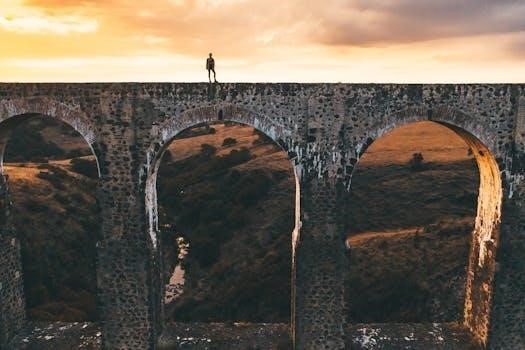
Key Features on Boundary Waters Maps
Boundary Waters maps highlight key features like entry points, portage trails, and campsites․ These elements are essential for planning a trip․ Lakes and waterways are also prominently shown for navigation․
Entry Points and Portage Trails
Boundary Waters maps, often available as PDFs, prominently display entry points, the designated locations where visitors begin their canoe trips into the wilderness․ These entry points are critical for permit compliance and trip planning․ Each entry point leads to specific routes and areas within the BWCAW․ Accurately identifying your chosen entry point on the map is the first step in a successful trip․ The maps also meticulously mark portage trails․ These trails connect waterways, allowing canoeists to carry their gear and boats overland․ The maps use different symbols or line styles to differentiate portage trails from other paths or features․ Knowing the location and length of portage trails is crucial for estimating travel time and physical demands of each route․ These trails vary in difficulty and terrain, so careful planning based on the map is vital․ A detailed PDF map ensures that travelers can navigate the intricate network of entry points and portage trails effectively․ These features are critical to a successful navigation through the Boundary Waters․
Campsites and Lakes
Boundary Waters maps, often in PDF format, clearly indicate designated campsites, essential for overnight stays within the BWCAW․ These campsites are marked with symbols that denote their presence along shorelines of the many lakes; The maps also reveal the location and shape of numerous lakes that make up the region’s interconnected waterways, critical for navigation․ Knowing the size and layout of lakes helps canoeists to plan routes and estimate travel time․ The maps show the relationship between lakes and connecting portage trails, allowing for strategic planning․ Additionally, the maps often contain data about lake depths or other features relevant to paddlers, such as islands and bays․ Accessing a detailed map is essential for selecting suitable campsites and navigating through the many interconnected lakes․ The PDF format is convenient for pre-trip planning and can be used offline․ These maps are integral tools for any BWCAW adventure, ensuring both safety and a successful trip․
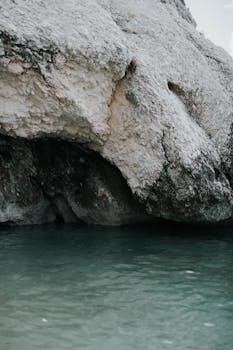
Using Maps for Navigation
Navigating with Boundary Waters maps requires skill and attention to detail․ Understanding map symbols and using a compass are essential for safe travel․ These skills are crucial for a successful trip in the BWCAW․
Map and Compass Skills
Mastering map and compass skills is paramount for safe navigation within the Boundary Waters Canoe Area Wilderness (BWCAW)․ While digital maps offer convenience, the reliability of a physical map and compass is crucial, especially in remote areas․ Understanding map symbols, such as contour lines, portage trails, and campsites, is essential for interpreting the landscape․ A compass, when used correctly, helps determine direction and maintain a course, particularly in dense forests or on open water․ Practice using these tools before your trip to become proficient in identifying your location and planning routes․ Combine map reading with compass bearings to navigate accurately, and always be aware of your surroundings․ Knowing how to adjust for magnetic declination is also a critical skill to avoid navigational errors․ These techniques, when practiced together, will help ensure a safe journey through the BWCAW․
Planning a Trip with Maps
Effective trip planning in the Boundary Waters relies heavily on maps․ Use them to identify entry points, plan routes, locate campsites, and assess portage distances․ A well-planned route ensures a safe and enjoyable adventure․
Route Planning and Selection
Planning a route within the Boundary Waters Canoe Area Wilderness (BWCAW) is a crucial step, and using a detailed map, particularly in PDF format, is essential for this process․ Start by examining the overall layout of the BWCAW, noting the interconnected lakes, rivers, and portage trails that create the network of waterways․ Consider your group’s experience level, desired trip length, and the type of scenery you wish to encounter when selecting a route․ A PDF map will allow you to carefully study the terrain, identifying potential campsites and portage locations to ensure your route is manageable and enjoyable․ Pay close attention to the entry points, as these will dictate the beginning and end of your trip․ Using a digital PDF map, you can zoom in to examine intricate details of each lake and portage, allowing for a thorough and precise planning process․ Furthermore, the ability to mark points of interest, measure distances, and share your route with others makes PDF maps an invaluable resource for planning a successful BWCAW expedition․ It is vital to cross-reference the map with permit regulations and availability․ Select a route that aligns with your group’s abilities and ensures a safe and rewarding trip through this remarkable wilderness area․
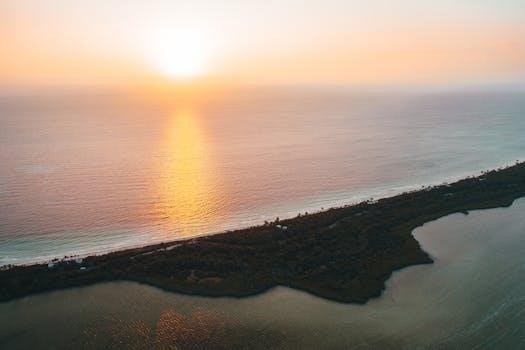
Where to Find Boundary Waters Maps
Boundary Waters maps, including PDF versions, are available from various online resources․ You can find them on interactive map websites, or directly from map providers and outfitters specializing in the BWCAW․
Online Resources and Interactive Maps
Exploring the Boundary Waters Canoe Area Wilderness (BWCAW) is made easier with the plethora of online resources and interactive maps available today․ These digital tools, often in PDF format, offer a convenient way to plan and navigate your trip․ Many websites provide interactive maps that allow users to zoom in and out, scroll across the region, and pinpoint specific locations like entry points, campsites, and portage trails․ These resources are invaluable for both pre-trip planning and on-the-go reference․ Some platforms allow you to search for lakes and streams by name, filter by county, or view specific features, making route planning more efficient․ Additionally, several websites offer the ability to view maps in various formats, including Google Earth, further enhancing the user experience․ These online resources often feature up-to-date information on trail conditions and campsite availability, which is crucial for a safe and well-prepared journey․ Moreover, many of these interactive maps are designed to be user-friendly, catering to both experienced paddlers and newcomers to the BWCAW․ The ability to access these resources online ensures that anyone can easily obtain the necessary information to embark on an adventure in this beautiful wilderness area․
Map Providers and Outfitters
When seeking reliable maps for your Boundary Waters adventure, numerous reputable map providers and outfitters offer high-quality options․ These providers specialize in creating detailed, accurate maps, often available in convenient PDF formats for digital use․ Companies like McKenzie Maps are well-known for their rugged, waterproof guides that cover the BWCAW and surrounding areas, including Quetico Provincial Park․ These maps are designed to withstand the rigors of canoe trips and include essential features such as portage trails, campsites, and entry points․ Outfitters also play a crucial role in providing maps, often bundling them with their services․ They can guide you through the map selection process and assist in choosing the right maps for your specific route․ Furthermore, some outfitters offer their own custom maps, tailored to the unique needs of their clients․ These maps often feature additional useful information, such as advice on route planning and campsite selection․ Choosing maps from established providers and outfitters ensures that you have access to the most reliable and up-to-date cartographic information, enhancing the safety and enjoyment of your Boundary Waters experience․ Many outfitters are also available to provide expert advice and help with trip planning․
